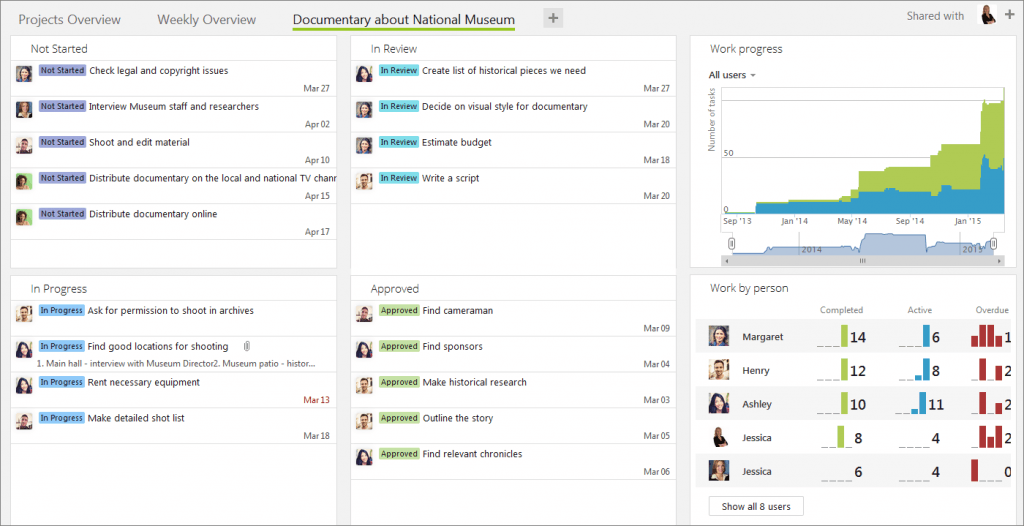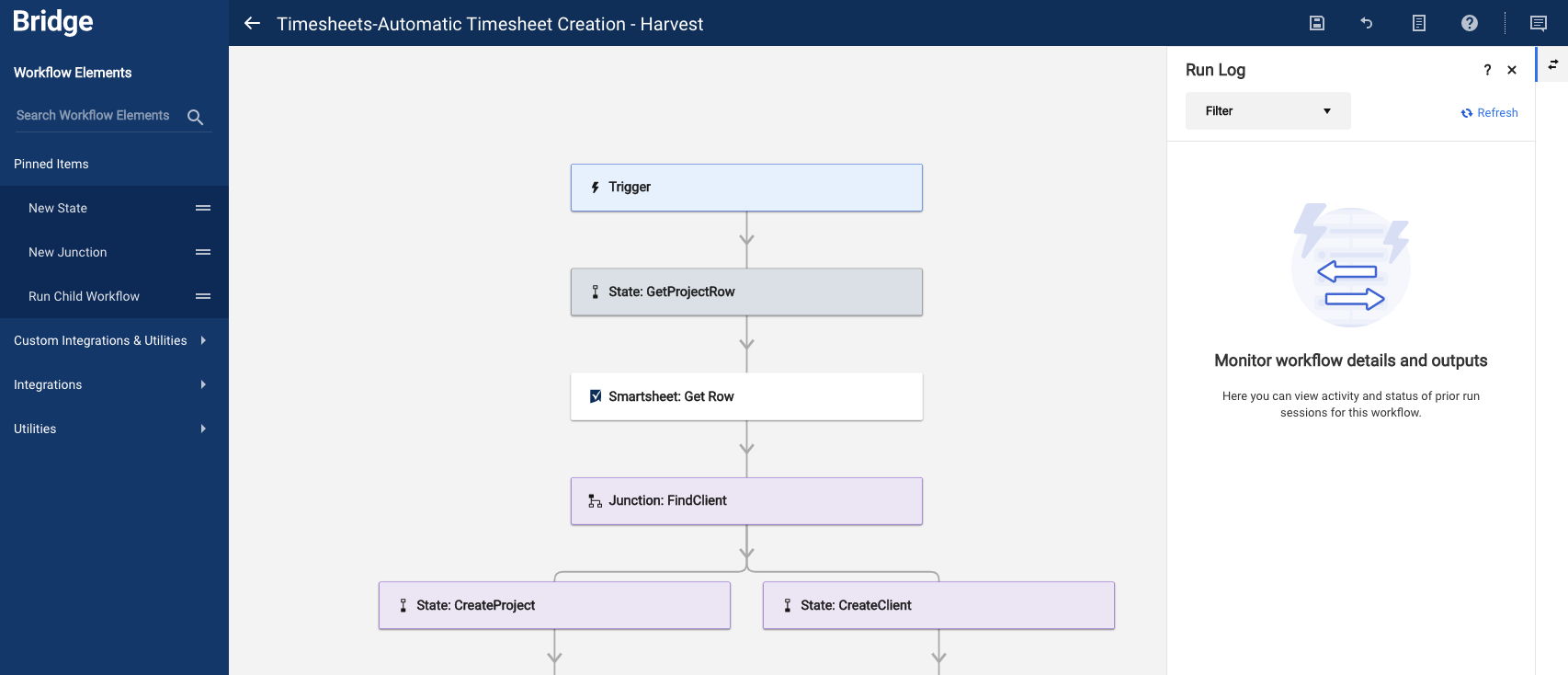In running your business, you constantly face choices — who to hire, who to promote, how to maintain growth, and what systems to use to make your workflows run smoothly. Two of the leaders in that last category are the project management platforms Smartsheet and Wrike.
Each platform is good for different things, so if you’re trying to choose between Wrike and Smartsheet, it’s important to understand their differences. Here’s what you need to know about Wrike vs Smartsheet and how they stack up against each other.
Using templates
Wrike
Wrike’s free project management templates are designed for flexibility and customization. You can use its templates to create project calendars, track your progress, and simplify your large-scale projects.
Once you’ve delegated tasks, Wrike provides a place to fill everyone in on how things are going as well where you are with your deadlines.
You can also connect Wrike with Google Workspace and Microsoft Teams to bring in additional outside resources. Note that Wrike’s free plan has limited features, so be sure to choose the right plan for your needs before you proceed.
Smartsheet
Smartsheet’s project management templates come armed with outlines and subsections to help you stay organized throughout your project. You can arrange your data in many different ways and report on any issues as you go.
Plus, you can collaborate in real time and eliminate some of the stop-and-start communication that might otherwise be a part of your process. Even better, your team leaders can assign individual tasks and add comments about your team’s work to make sure everyone understands what they need to be doing every step of the way.
Shaping your workflow
Wrike
Smart project planning involves understanding the stakeholders involved in every stage of your team’s workflow. With Wrike, collaboration is the name of the game, as you effectively create a virtual cloud-backed workspace.
This means that anyone on your team can access information on the go, allowing for quick edits and easy access in a secure platform. Plus, Wrike has a mobile app, giving you a true anywhere, anytime workflow environment.
Smartsheet
With Smartsheet, you can attach files from your computer, Google Drive, OneDrive, Dropbox, and more to create a centralized database for all of your project information. You can formulate summary reports and make changes to them based on how your tasks change during your project.
Plus, with Smartsheet’s Activity Log, you can see who made changes and when. You can also create automations to simplify your workflow. You and your team have to make a lot of decisions throughout the course of your project, and Smartsheet makes sure you have everything you need to do that.
Arranging how you view your project
Wrike
The Wrike vs Smartsheet debate also comes down to how you like to see your work presented. Wrike’s three-pane layout means that all your project data is visible, and you can use this feature to prioritize specific details.
Say you’re on a tight deadline for a small part of your larger project. The ability to look at these tasks in detail and lay out what needs to be done is invaluable. Plus, with each employee’s activities displayed chronologically, it’s easy to track your project’s progress in real time.
Smartsheet
Smartsheet provides comprehensive options for viewing your project workflow. Different projects require different kinds of tracking, and Smartsheet gives you the ability to create Gantt charts for timelines, calendars for due dates, and Kanban cards for the status of tasks.
Smartsheet’s dashboards are easily accessible and clearly show your project status and performance. Plus, with the ability to chart individual goals against your end deadline, you’ll always be able to monitor your progress and efficiency, and ensure you’re staying on track.
Observing and reporting
Wrike
One of the reasons why effective project management is so important is that it allows you to analyze your performance both during your project and once you’re finished. And with different report options, Wrike’s analytics capabilities allow you to do just that.
You can display detailed charts and choose which statistics are most visible. Plus, you can customize these charts, so your data will always be arranged just how you like it, making it easier to analyze information and draw conclusions.
Smartsheet
Smartsheet can create real-time, in-platform reports while your project is in progress. You can customize dashboards for your needs, with individual charts and reports at your disposal to guide you through your project. You can pull specific data points to share with your team and create a “portal,” or resource hub, to consolidate this information.
What’s more, you can easily edit any summary reports you create, establishing a running log of your project workflow as you make your way to the finish line.
Connecting with Jotform
Wrike
Jotform has a native integration with Wrike. Through this integration, submissions from your Jotform forms automatically create tasks in Wrike.
Smartsheet
Jotform also has a native integration with Smartsheet that automatically converts Jotform form submissions into rows in your Smartsheet.
Making a choice
The Wrike vs Smartsheet comparison really comes down to scalability. Wrike has many helpful features, but you’ll need to choose a higher-tier plan to get the most out of its software. Smartsheet is a bit more intuitive, but you might not need all the functionality it includes.
Take a look at the pricing plans for Wrike vs Smartsheet and decide which might work best for you — not just for your next project, but also for ones you anticipate undertaking in the future. Having a trusty project management tool at your side can make life easier for you and your team, which is why weighing your options and choosing the right one for you is an exercise well worth doing.
Photo by Daniel Thomas on Unsplash














Send Comment: